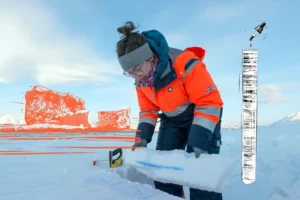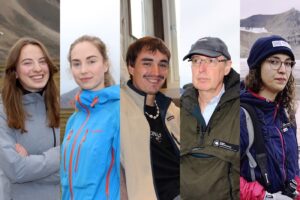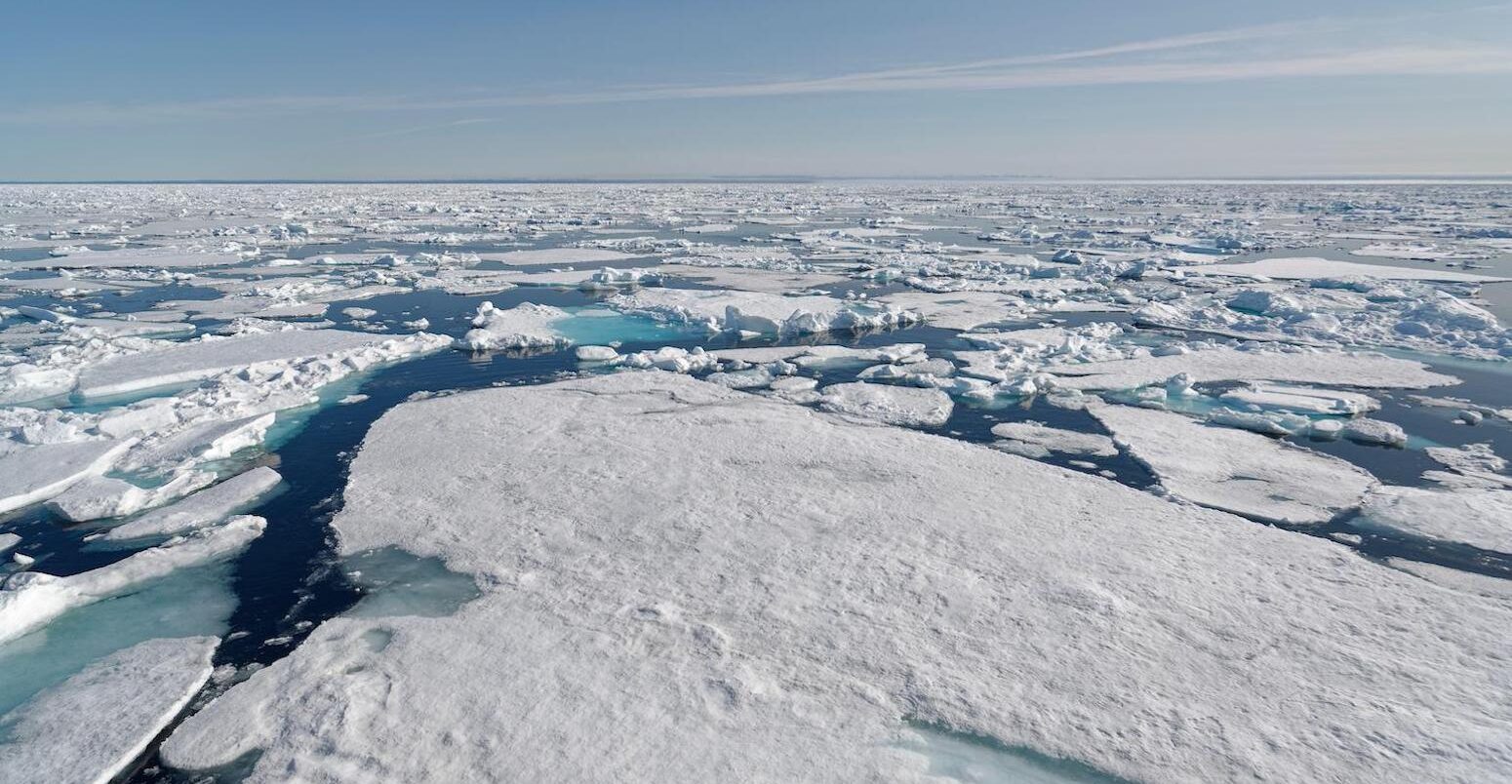
Montreal Protocol has slowed loss of Arctic sea ice, say scientists
Ayesha Tandon
05.22.23Ayesha Tandon
22.05.2023 | 8:00pmThe Montreal Protocol – which aims to reduce emissions of ozone-depleting gases – has had the unexpected benefit of slowing Arctic sea ice loss, according to new research.
In 1987, nearly 200 countries signed the landmark Montreal Protocol, promising to limit their emissions of “ozone-depleting substances” in an effort to slow the thinning of the planet’s ozone layer.
The agreement is widely hailed as one of the most successful environmental treaties ever implemented.
Today, nearly 99% of banned ozone-depleting substances, such as chlorofluorocarbons (CFCs), have been phased out and the ozone layer is on track to fully recover in the coming decades.
However, the treaty has also brought unexpected benefits.
Many of the chemicals banned under the agreement are powerful greenhouse gases and, by limiting their emissions, the Montreal Protocol has already averted around 0.5C of global warming.
The study, published in the Proceedings of the National Academy of Sciences, finds that the Montreal Protocol had averted more than half a million square kilometres of Arctic summer sea ice loss by 2020 by limiting warming in the region.
The future of the Arctic is still uncertain, but many experts expect the first “ice free” summer around the middle of the century. The authors find that the Montreal Protocol is already delaying this moment by around 15 years. They add that, by 2050, this landmark treaty will have averted 0.88C of Arctic warming. (The Arctic has warmed more rapidly than the global average.)
“I think this should give us hope”, the lead author of the study tells Carbon Brief. He says the Montreal Protocol was successful because the international community took “really quick action”, adding that its success “should encourage us that action on climate is possible”.
The Montreal Protocol
The stratospheric ozone layer – a high concentration of ozone gas that sits 15-30 km above the earth’s surface – is crucial for life on earth. It acts as a shield, protecting animal and plant life by absorbing damaging ultraviolet radiation from the sun.
In the late 1970s, scientists discovered that human-produced chemicals called halocarbons (pdf) were reacting with the ozone gas, causing the ozone layer to get thinner. In 1985, a team of experts made the worrying discovery that a “hole” was opening up in the ozone layer over Antarctica every spring. Their research was published in Nature (pdf) and became a seminal article on the topic.
The international community sprang into action to protect the ozone layer. Just two years later, 197 countries signed the Montreal Protocol into law. Under this agreement, signatories agreed to rapidly phase out their emissions of around 100 different “ozone depleting substances”.
Before the agreement was signed, ozone-depleting halocarbons were widely used as coolants in refrigerators, spray can propellants and cleaners. These were quickly replaced with non-ozone-depleting hydrofluorocarbons (HFCs) after the agreement was signed. Today, nearly 99% of banned ozone-depleting substances have been phased out and the ozone layer is on track to fully recover in the coming decades.
The Montreal Protocol is “the most successful climate treaty to date,” Dr Mark England – a senior research fellow at The University of Exeter and lead author on the study – tells Carbon Brief.
He says there was “scaremongering and fear mongering” around the impacts of the Montreal Protocol when it was implemented, with people warning that phasing out commercially important gases would lead countries to bankruptcy. But he says that “none of that came to pass”, adding that the agreement was successful in large part because the international community took “really quick action”.
‘World avoided’
The study explores the impact of the Montreal Protocol on human-caused emissions of CFC and HFC gases over 1960-2050 using models from the fifth coupled model intercomparison project – a framework that scientists use to compare different models.
The authors run the models under moderate warming (RCP4.5) and very high warming (RCP8.5) scenarios. In both scenarios, emissions of ozone depleting substances drop rapidly following the implementation of the Montreal Protocol while levels of the replacement gas, HFC, rise. In both scenarios, the ozone layer is expected to make a full recovery over the coming decades.
The paper also presents a hypothetical “world avoided” scenario, in which the Montreal Protocol was never signed. Levels of ozone depleting substances rise steadily by 3.5% per year, while HFC levels remain low. In this scenario, the Arctic ozone layer thins rapidly over the coming decades.
The graphics below show levels of ozone depleting substances in parts per trillion (left), hydrofluorocarbons (middle) and of Arctic ozone (right) in the atmosphere between 1960-2050. The solid and dotted blue lines show the RCP4.5 and RCP8.5 “standard” scenarios, while the red line shows the world avoided scenario.
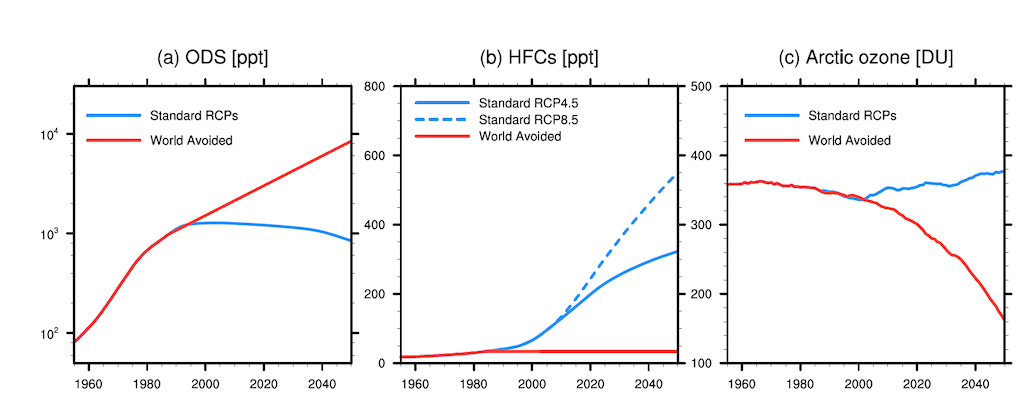
In addition to limiting ozone depletion, the Montreal Protocol had the unintended benefit of limiting global warming. Many of the chemicals banned under the agreement are powerful greenhouse gases, and by limiting their emissions, the Montreal Protocol has already averted around 0.5C of warming.
The study notes that HFCs, which have largely replaced CFCs, are also greenhouse gases. However, according to the study, their warming impact on surface temperatures is “more than an order of magnitude smaller” than that of their ozone-depleting counterparts.
Arctic ice
Melting sea ice is one of the most tangible and iconic impacts of climate change. In the Arctic – where warming is progressing faster than the global average – the authors find that the Montreal Protocol has already prevented a surface temperature rise of 0.88C.
To investigate changes in Arctic sea ice in more detail, the authors map Arctic sea ice extent under different scenarios.
The plot below shows September sea ice concentrations at 2020, 2030 and 2040 under the World Avoided and Standard scenarios for the RCP4.5, where darker blue indicates a higher concentration of sea ice. The difference between the two scenarios is shown in red in the right hand column, where darker red indicates a greater difference between the world avoided and standard scenarios.
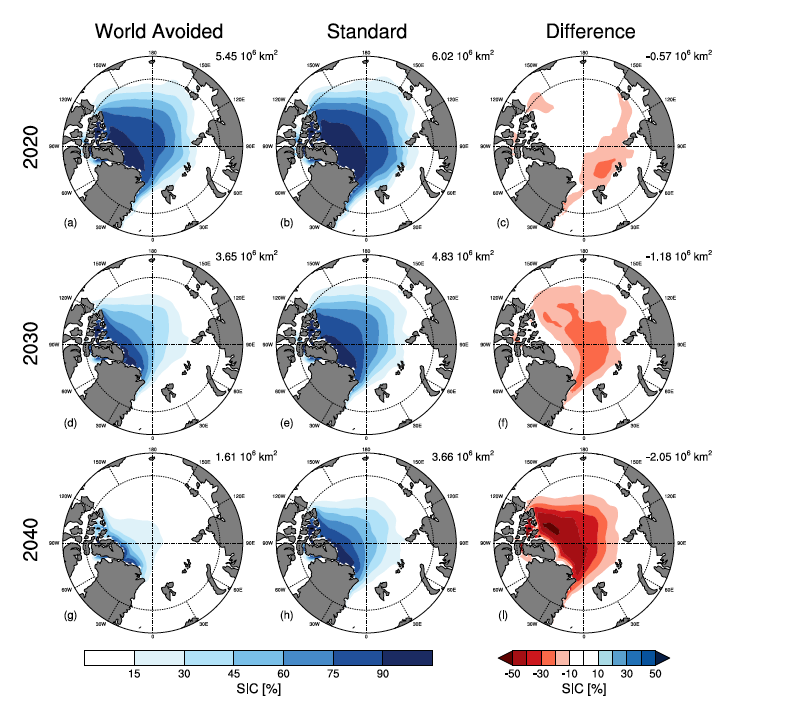
The paper finds that, by 2020, the Montreal Protocol had already slowed Arctic sea ice loss by more than half a million square kilometres. Under a moderate emissions scenario, the Montreal Protocol will have prevented one million square kilometres by 2030 and two million by 2040, it adds.
The authors find that for every averted tonne of ozone depleting substances, around 7,000 square kilometres of Arctic sea ice loss is avoided. For comparison, a tonne of averted CO2 emissions only saves three square kilometres of Arctic sea ice, they say.
Ice-free summer
Every summer, rising temperatures cause Arctic sea ice to melt and shrink. The annual minimum sea ice extent is usually reached in September.
Annual minimum Arctic sea ice extent is dropping by around 13% per decade and experts expect the region’s first “ice-free” summer around the middle of the century. An “ice-free” summer means a sea ice extent of less than one million square kilometres, rather than zero sea ice cover.
The first ice free Arctic summer will be “a step change in the way we view our climate system” and will “captivate peoples’ attention”, England tells Carbon Brief.
To estimate the date of the first ice-free Arctic summer, the authors run their models thousands of times with slightly different initial conditions and use the results to show the probability of the first ice-free Arctic occurring in different years. They repeat this for both RCP4.5 and RCP8.5 scenarios, using current climate conditions (the “standard” scenario) and the world avoided scenario in which the Montreal Protocol was never signed.
Dr Zack Labe is a postdoctoral researcher working at NOAA Geophysical Fluid Dynamics Laboratory and the Atmospheric and Oceanic Sciences Program at Princeton University, and was not involved in the study.
He tells Carbon Brief that it is “challenging” to predict the date of the first ice-free Arctic due to the high natural variability in the region, adding that running the climate models many times helps to account for this natural variability.
These results are shown below for the standard (blue) and world avoided (red) scenarios, under both RCP4.5 (top) and RCP8.5 (bottom).
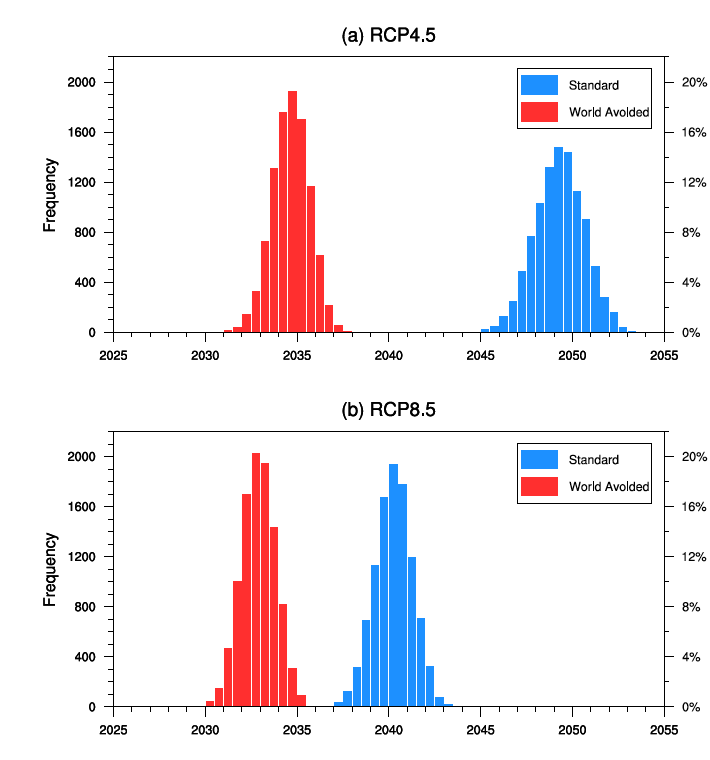
The authors estimate that under RCP4.5, the first ice-free Arctic summer will be recorded in 2049. However, this milestone would have been expected around 15 years earlier if the Montreal Protocol had not been implemented.
The paper adds that under the very high warming RCP8.5 scenario, the first ice-free Arctic would have been recorded in 2040 and 2033 with and without the Montreal Protocol.
This estimate is conservative, the authors explain. The study assumes that without the Montreal Protocol, emissions of ozone depleting gases would have risen by 3.5% per year. However, the authors note that a range of 3-7% is possible.
Had the Montreal Protocol not been implemented and emissions of ozone depleting substances risen by 7% per year, then the first Arctic ice-free summer “could be happening today”, England tells Carbon Brief.
The paper is “really fascinating”, Labe tells Carbon Brief, adding that it is “accessible, clear, and concise”.
The Kigali amendment
In October 2016, almost 200 countries signed the Kigali amendment to the Montreal Protocol, agreeing to a phase-down of HFC emissions. Under the agreement, developed countries started to limit their use of HFCs from 2019 and developing countries agreed to do the same from the mid or late 2020s.
The authors do not include the Kigali amendment in their model simulations. They say the amendment will limit warming by less than 0.05C by 2035 and so would not have a notable impact on the data of the first ice-free Arctic.
Dr Amna Jrrar is a research scientist at the Royal Scientific Society in Jordan, with expertise in ozone and sea ice modelling, who was not involved in the study. She agrees that including the Kigali amendment would not “have a significant impact on the conclusions of the study”.
However, the paper still notes the importance of the Kigali amendment in the longer term, saying that it will limit global temperatures by 0.3-0.5C by the end of the century.
Dr Yu-Chiao Liang – an assistant professor at the National Taiwan University – also warns that a recently reported rise in emissions of five banned CFC gases could impact the results of the study. Liang, who was not involved in the study, warns that “if these emissions continue, it is likely that the Arctic warming will be further amplified and the ice-free summer will come earlier”.
Nevertheless, England tells Carbon Brief that this is a “positive story”. He adds:
“We have taken positive actions, and we’ve had real climate benefits that we can understand with models. I think this should give us hope… it should encourage us that action on climate is possible and it can have an effect in the next couple of decades.”
England et al (2023), PNAS, The Montreal Protocol is delaying the occurrence of the first ice-free Arctic summer, doi:10.1073/pnas.2211432120


